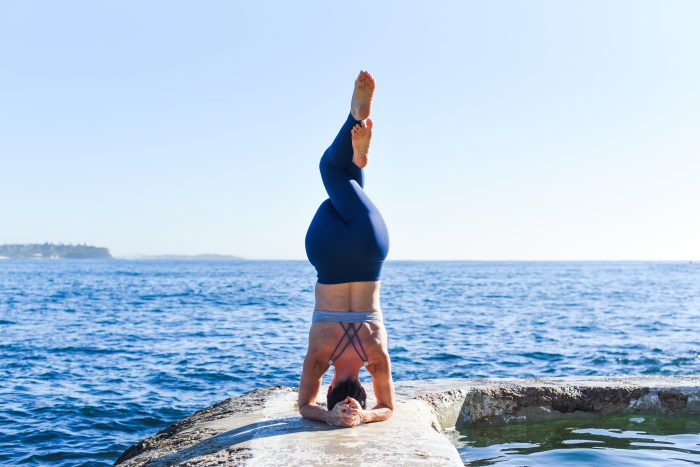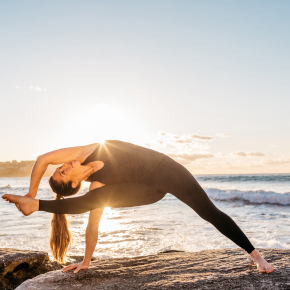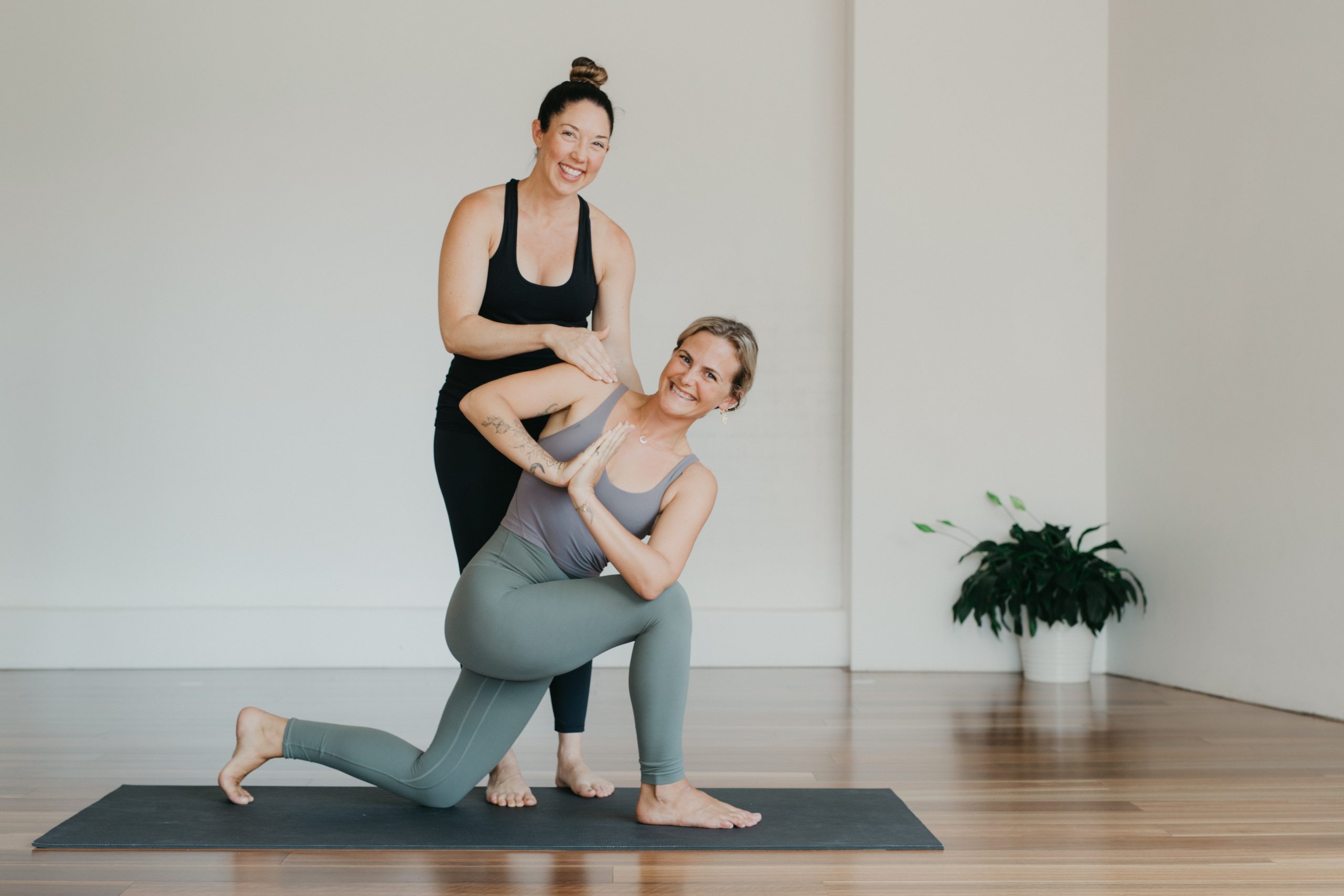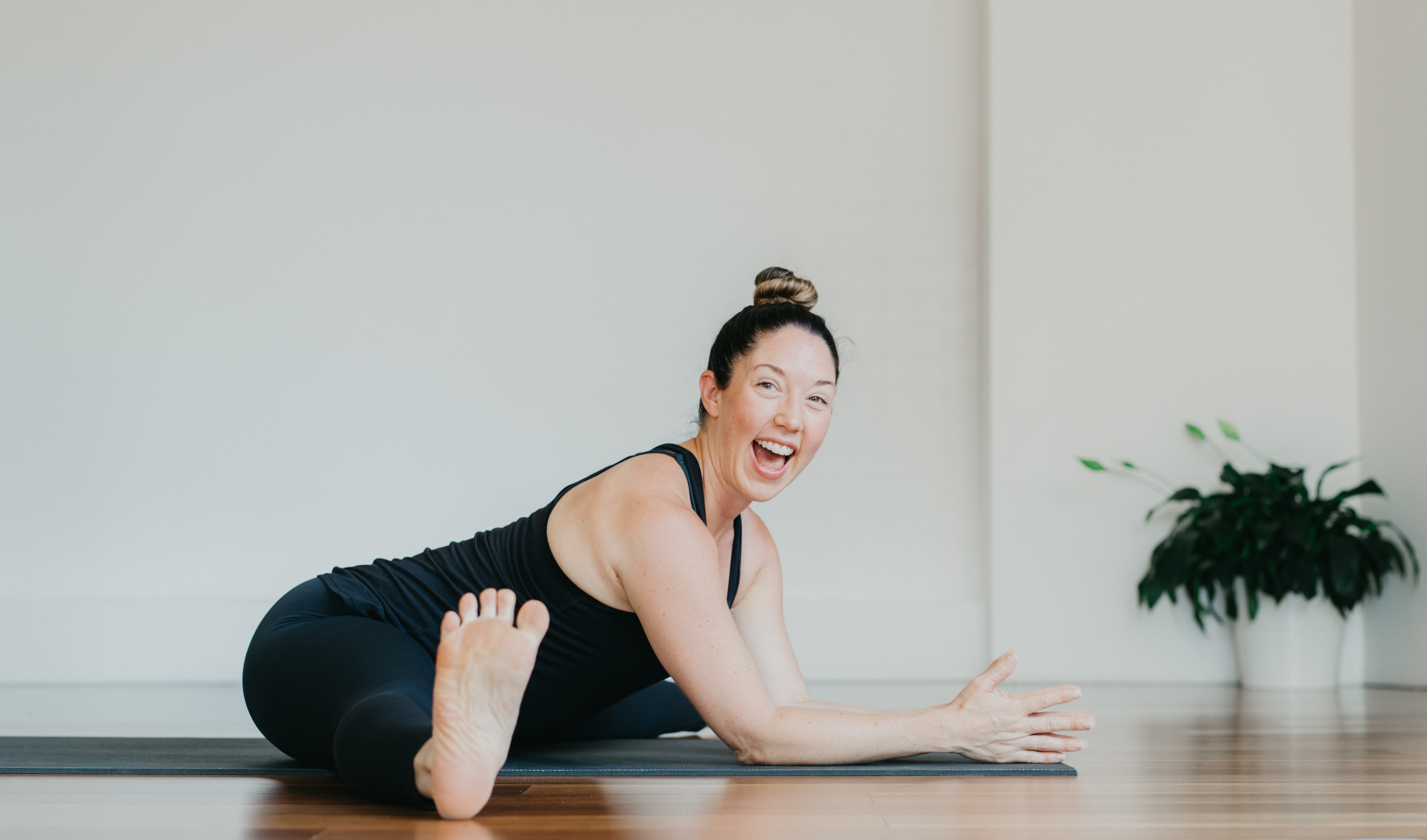Tips to modify your yoga practice during pregnancy
by Kat Clayton
During pregnancy – morning sickness, uncomfortable sensations and weird food cravings are all things one can possibly expect to experience. But what about how to adapt to your changing body with fitness and your yoga practice?
Luckily with a few slight modifications, yoga and regular exercise can support you in coping with hormonal and body changes. It gives you a powerful energy and mood boost, keeps niggling aches and pains at bay. And supports mental wellbeing as you adapt to the growing changes happening during pregnancy.
What’s helped me cope throughout my pregnancy is a weekly dose of: daily meditation practice, yoga (yes, even doing handstands!) 20-30 min of strength training / physical exercise a couple of times a week, sleeping lots and eating healthy.
The important thing is to listen to your body, try and stay calm and active, not overdo it and rest when needed. While every woman and every pregnancy is unique, and a few of my answers may surprise you!
Read on for a few of my top 5 tips for how to look after your body and modify your yoga practice during pregnancy…
Tip #1: Take pre-natal specific classes
Always inform the teacher how far along you are in your pregnancy. An experienced pre-natal or qualified teacher will help you modify your yoga or fitness movements appropriately, feel empowered and move your body more safely and confidently.
Tip #2: Listen & trust your body. Mama, you’re capable of so much more than you think you are!
More than a few pregnant women I know happily kept practicing backbends and inversions right up until the end of their 3rd trimester (saying it felt great to stretch out the belly and get upside down!)
My body said “NO” to deeper backbends, forward folds and deep lunges. However, it may come as a surprise that my body still says “YES” to … Handstands! (Yes, I still practice handstands regularly even now at 31 weeks pregnant)!
I started to modify my yoga practice a lot more around the second trimester – doing less, resting more. Rather than pushing limits in a dynamic poses and deep stretches, I opted for more gentle flows with plenty of modifications. (See Tip #1) it’s always a good idea to seek the advice of a qualified teacher, but ultimately you have to listen to and trust your own body and instincts.
Tip #3: Do less, rest more
Now is a good time to practice the age-old yogic wisdom of letting go of your attachments (and apparently sleep!) You may have to let go of a few postures and focus less on intensity and flexibility – and that’s OK. It’s not forever.
Take time in your day to cultivate stillness, rest, gratitude & compassion for your amazing body and it’s capacity to grow a human! I’ve seen students push themselves to try and keep up the same level of practice. Unfortunately it usually doesn’t end well whether it’s in disappointment, tears, injury or plain old frustration.
Tip #4: Put your legs up the wall and B-R-E-A-T-H-E
A pregnant woman has up to 45% more blood volume in her body – which means a huge increase in cardiac output during pregnancy. No wonder it’s easy to feel out of breath climbing up the stairs!
Whether it’s legs up the wall or holding a 30 second handstand…. short (under 1 minute) periods of modified inversions can help alleviate the heart of the extra burden of pumping all that increased blood-volume around and reduces feeling of heaviness and swelling in the ankles and legs.
I recently taught a private lesson with two pregnant women (sisters) – both were in their mid to late 3rd trimester. They were happily doing handstands against the wall with support and felt invigorated and empowered afterwards. While I wouldn’t recommend this for everybody, going upside in ways that feel comfortable for you (ie, legs up the wall) can alleviate swelling through the legs, lower back and leave you feeling re-energised and refreshed!
Please note: If you are doing handstands, be sure to take time for proper wrist and shoulder warmups – especially now that there’s a bit of extra weight to carry around.
Also, savasana and restorative yoga can be wonderful but pregnant women should be advised it’s best not to lie flat on your back for long periods which can obstruct circulation of the inferior vena cava (IVC) an important vein which transports deoxygenated blood from the lower body and the uterus back to the heart. Instead, try lying down (ie, during savasana) and roll over to rest on your left side.
It’s about being smart about what’s right for you, listening to your body and seeking knowledgeable teachers to help support you on your unique pregnancy journey.
Tip #5: Hit the gym! And try and move your body everyday
20 min workouts (both online and at the gym) have been an absolute game changer. It’s given me a tonne of energy and enabled me to walk up a set of stairs without huffing and puffing (well not quite as much).
If you’re lucky enough throughout your pregnancy to be able to get up and about (some Mommas are doing it tough out there!) – Try and move your body a little bit everyday. Whether it’s dancing, walking, gardening, swimming, going to the gym or yoga… Do what empowers you to feel strong, confident, builds both physical and mental resilience, peace and calm.
My job as a yoga teacher and teacher training facilitator is to educate, inspire, nurture and empower my students and expecting Mummas to create a powerful connection with their body, breath, to listen and trust your intuition, develop strength and inner calm and peace. Move, breathe, find stillness and who knows – maybe even be doing handstands right up until delivery day!
This article was written by Kat Clayton
(Connect @katclaytonyoga | www.katclaytonyoga.com)
Related Posts




